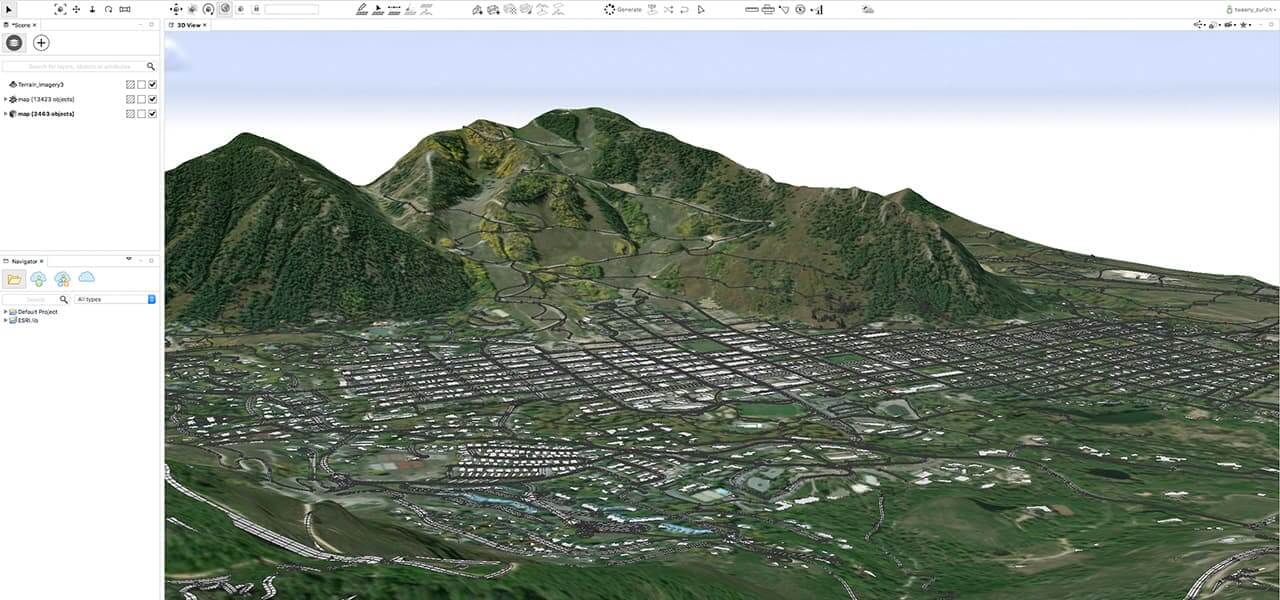
To overlay a raster image over the target area, it may need to be georeferenced in ArcGIS first if it doesn’t import correctly into CityEngine. More than one image can serve as background in CityEngine’s Web Scene if text or other features need to be adjusted for various zoom levels or for visibility reasons. OSM data matching the extent of the elevation model was exported and converted to an image file with Maperitive 2.0, a free desktop application for drawing maps based on OpenStreetMap and GPS data, and exported as a BMP file at the preferred scale. In this case, OpenStreetMap (OSM) was used as a basis to develop an overlay image.OSM provides a suitable basis to create an abstract representation of the general infrastructure on university campus, but other image overlay options exist. It is advisable to make all edits to the image before draping it on the terrain. CityEngine supports image overlays on terrain data. Once the elevation model is generated, it is usually draped over with an air photo. Trimmed OSM image with x,y control points marked after georeferencing Creating an Overlay Image The TIFF was dragged into CityEngine as a terrain layer. After opening the output raster, it was exported as a TIFF to the CityEngine workspace. The Sampling Distance option used should be a cell size of less than 10 meters, and 3 to 4 meters is preferable. To prepare the TIN for CityEngine, it was opened in ArcMap, and the TIN To Raster tool (in the 3D Analyst toolbox) was used to convert the TIN to a raster. A TIN for Fairfax County was acquired and clipped to the area of George Mason University. A TIN was used for the base elevation data for the campus area, but several other elevation data options would also have worked.

Importing a TIN File into CityEngineĪ triangular irregular network (TIN) file represents a surface and is often used to visualize terrain information. Finally, buildings were either imported or created, trees imported or generated, and thematic data symbolized.

At this point, 3D roads and sidewalks were generated and imported into Esri CityEngine. A labeled raster image file was created so it could be draped over the model.

The first step in the process was the generation of a campus elevation model. A TIN of the campus was imported into CityEngine.


 0 kommentar(er)
0 kommentar(er)
